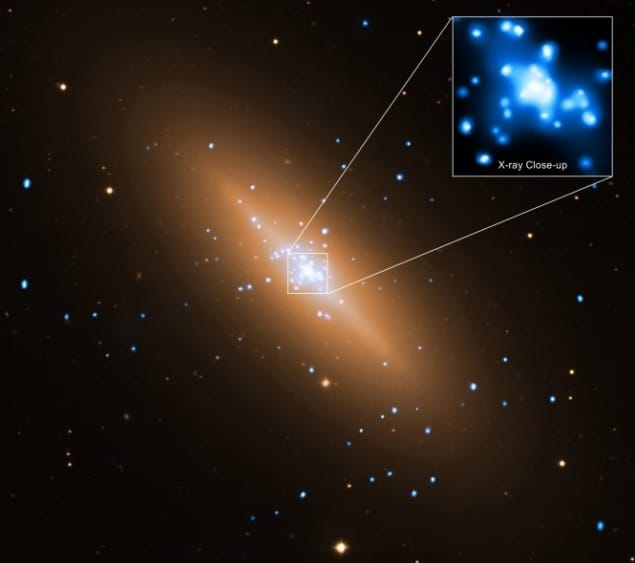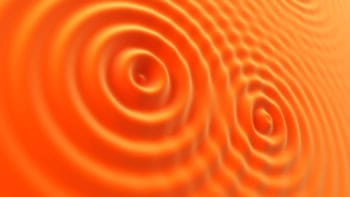
Evidence for gravitational waves from binary supermassive black holes could be spotted in pulsar-frequency anomalies in the next 10 years, according to researchers in Germany, the UK and the US. Distortions in space–time caused by the passage of gravitational waves should temporarily alter the distance between Earth and certain highly regular pulsars, affecting the periods of the radio pulses received from them.
Frequency threshold
The recent observation of gravitational waves by the LIGO and Virgo experiments represents one of the most important astronomical breakthroughs of the last few decades. But although there is no overstating the potential of this new eye on the cosmos, there are some gravitational-wave sources to which the technique will always be blind.
Earthbound laser interferometers such as LIGO and Virgo are sensitive to gravitational-wave frequencies between 10 Hz and 10 kHz – a range that corresponds approximately to the human-audible sound spectrum. Some astronomical sources produce signals far below the bottom end of this range, however. When two galaxies collide and merge, for example, the gargantuan black holes at their respective centres can end up orbiting each other as a supermassive black-hole binary (SMBHB). Even if the objects are destined ultimately to coalesce, such relationships can last for billions of years, with gravitational waves emitted continuously at frequencies as low as 1 nHz.
Chance of detection
Writing in Nature Astronomy, Chiara Mingarelli of the Max Planck Institute for Radio Technology in Germany, and California Institute of Technology in the US, and a multi-institutional collaboration have calculated the likelihood of such an SMBHB being detected against the gravitational-wave background under a range of possible conditions. The group based their analysis on a catalogue of more than five-thousand suitably sized “local” galaxies identified by the Two Micron All-Sky Survey (in this context, “local” means within about 730 million light-years from Earth). The researchers then used the results of cosmological simulations conducted by the Illustris project to estimate that about 100 of these galaxies are likely to contain SMBHBs.
Currently available pulsar timing arrays were sufficient to reveal gravitational waves in fewer than 1% of probabilistic simulations based on these local sources, which helps explain the lack of positive results obtained so far. Projecting the addition of dozens of new pulsars to the pulsar timing array over the next decade, and assuming that the gravitational-wave background can be subtracted, the researchers found that continuous gravitational waves from at least one SMBHB could be detected in the next 10 years.



